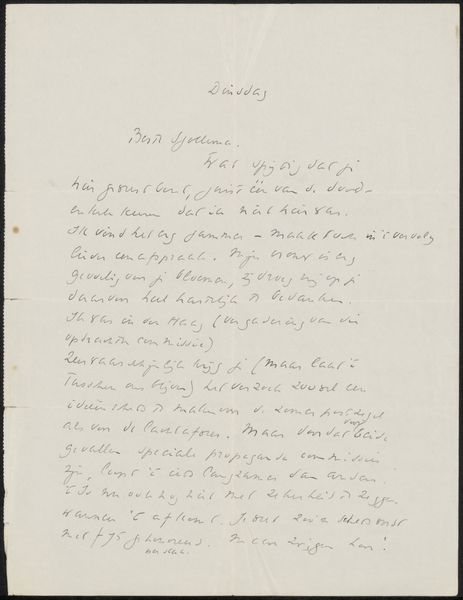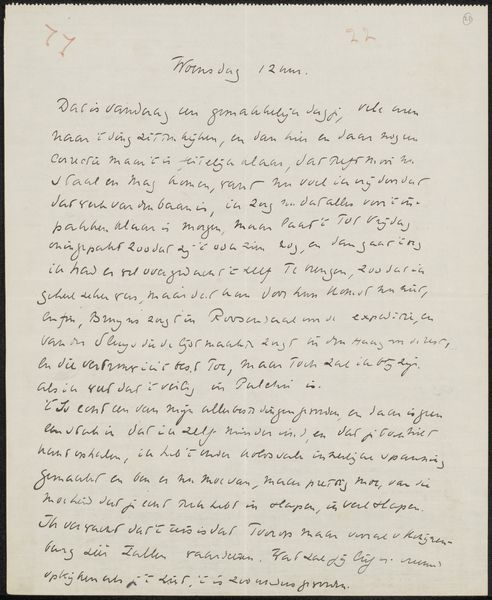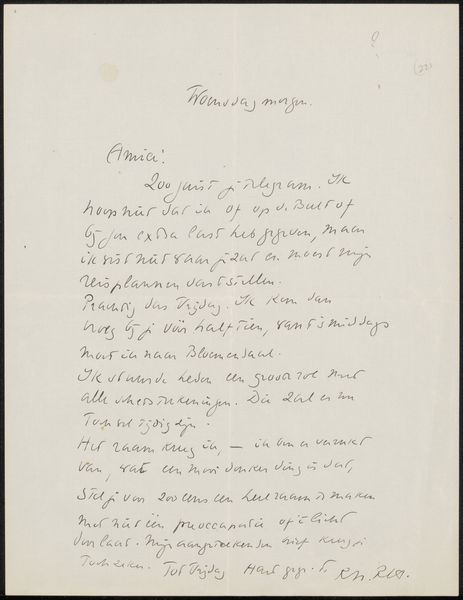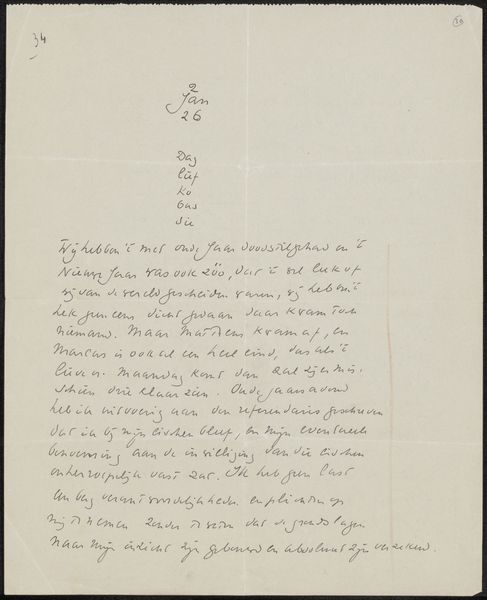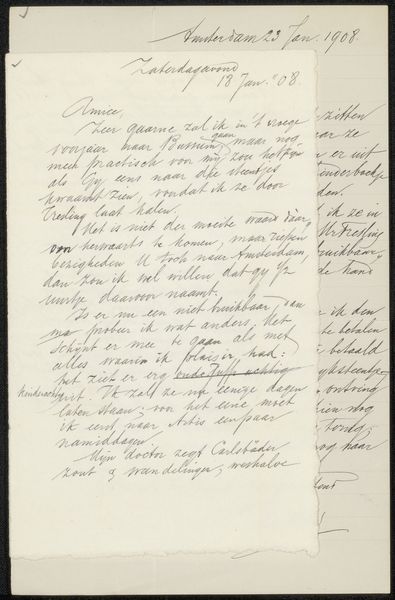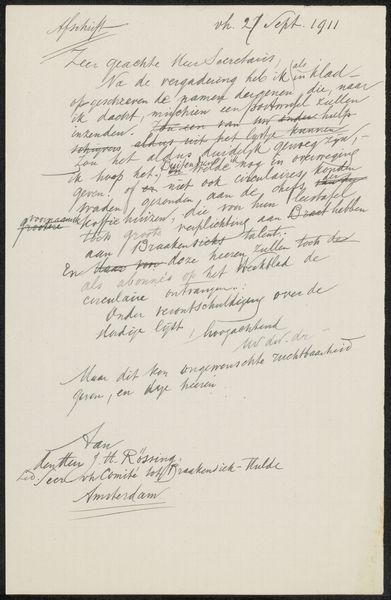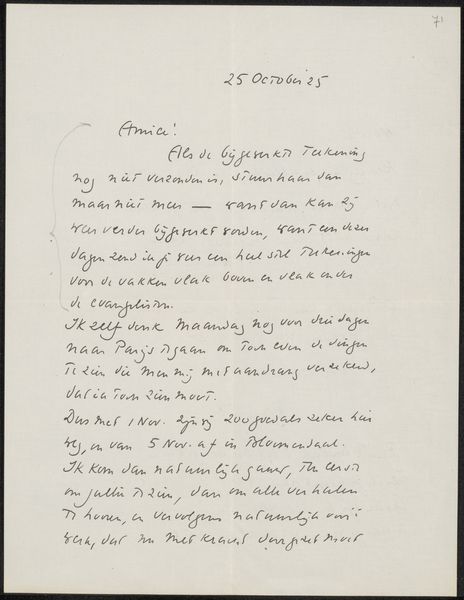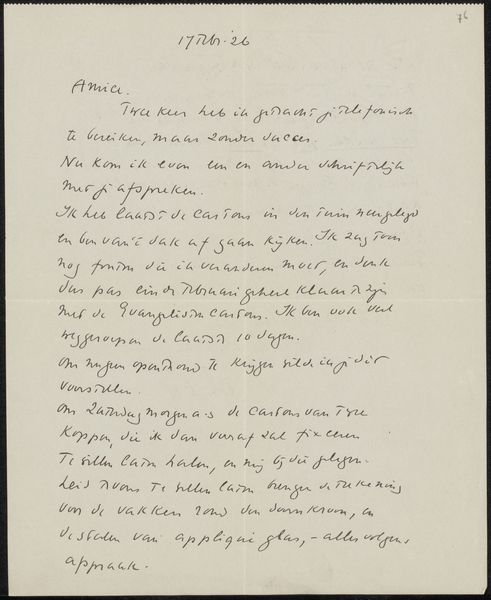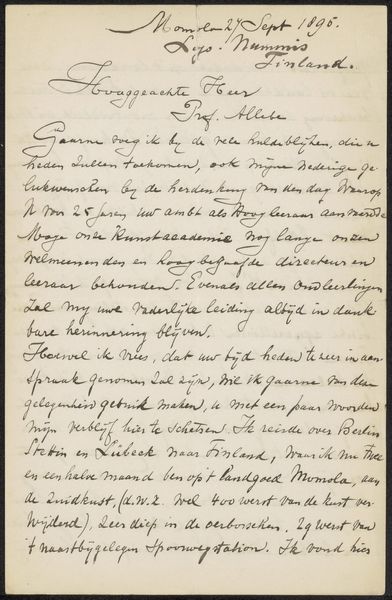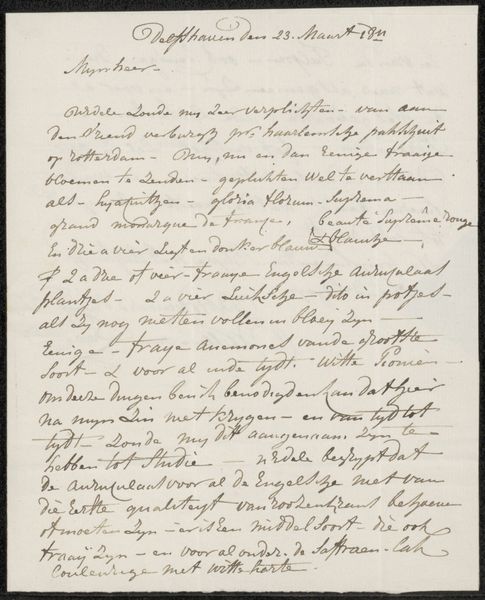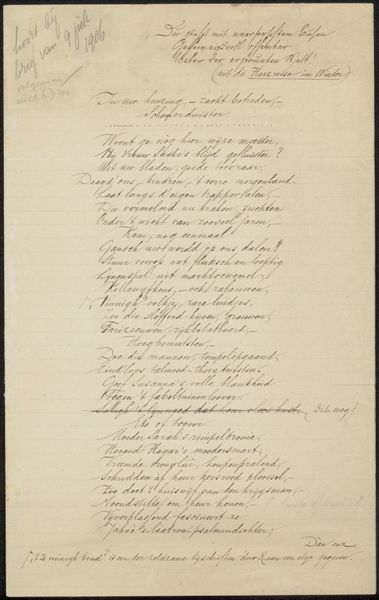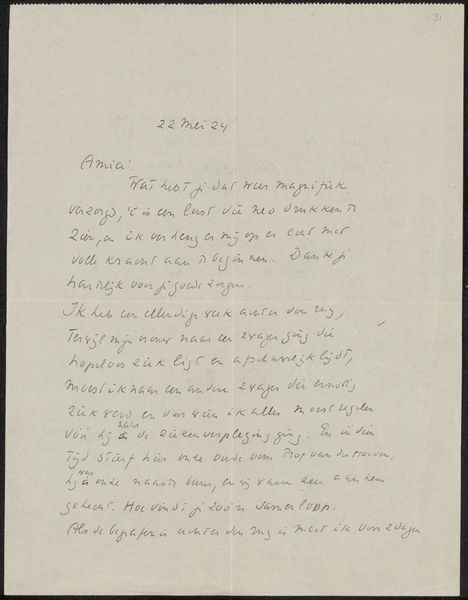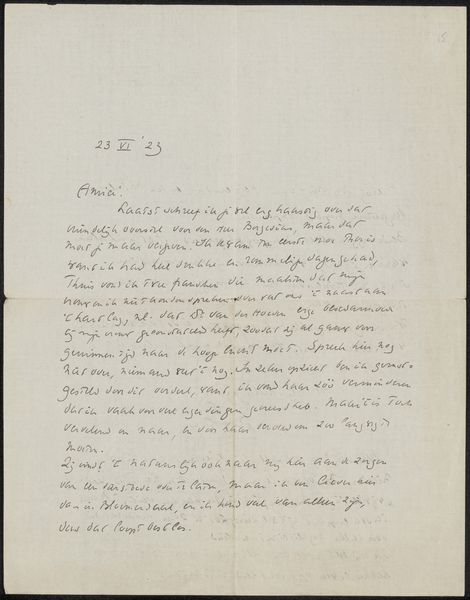
drawing, paper, ink
#
drawing
#
paper
#
text
#
ink
#
folk-art
#
sketch
Copyright: Rijks Museum: Open Domain
Curator: Here we have “Brief aan Willem Bogtman,” or "Letter to Willem Bogtman," a drawing possibly created between 1925 and 1927 by Richard Nicolaüs Roland Holst. It’s part of the Rijksmuseum's collection. Editor: My initial impression is one of intimacy, almost secrecy. It feels like a personal correspondence, something meant for a single pair of eyes. The stark contrast of the black ink on the pale paper, the dense script, and the small sketched ornament at the bottom all contribute to this feeling. Curator: That sense of intimacy is understandable. Roland Holst was deeply involved in the Dutch Arts and Crafts movement, which emphasized personal expression and the value of handmade objects in response to industrialization. This letter embodies that ethos, offering a glimpse into the artist's personal network. Editor: The calligraphic quality of the handwriting really stands out. The controlled variation in line weight and the rhythmic spacing create a visually engaging texture, especially the final drawing detail. It gives the text a decorative presence that transcends its literal meaning. It reminds me a bit of folk art, like a painted Fraktur. Curator: The letter touches on themes very much related to that folk-art movement; he discusses ornament, craft and devotion and the tension he has balancing these elements. Roland Holst’s connections to socialist circles would suggest a deep engagement with folk art’s challenge to elite visual culture. Editor: Interesting. I am just stuck on that little graphic he includes. It appears geometric and symbolic but without context I find the image hard to decipher. It looks to be both carefully considered and dashed-off, with the stepped-pattern underneath, and is really the most striking part of the piece to me. Curator: Knowing Roland Holst, it most likely *is* a synthesis of the carefully planned and something done on the spur of the moment, likely deeply symbolic for both parties in the conversation. The lack of context to an outside viewer such as ourselves, however, perhaps best highlights the private, internal artistic and social lives of early twentieth century Dutch artists. Editor: It makes you think how so many messages only make sense to those within a certain sphere. Anyway, I see more in this humble note than I first suspected. Curator: Agreed. Roland Holst provides an invaluable glimpse into not only the artist's world but the social and cultural dimensions of art-making itself.
Comments
No comments
Be the first to comment and join the conversation on the ultimate creative platform.
